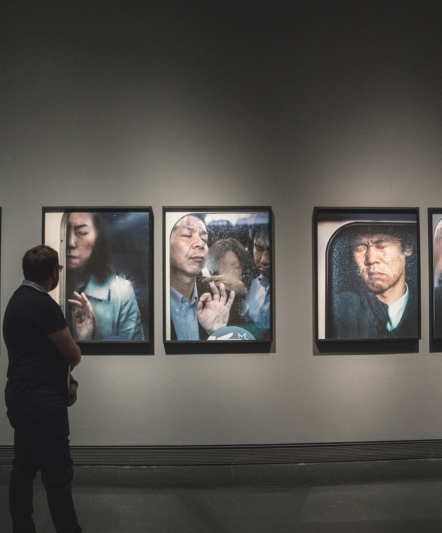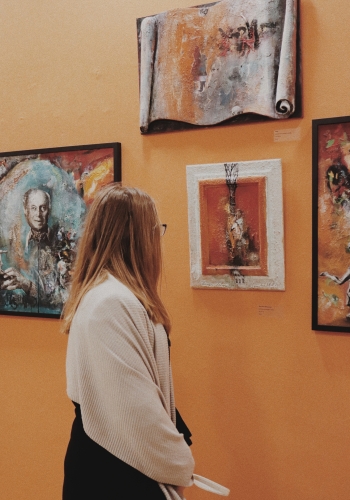A Passion for Providing Quality in Printing
Clichéd bohemian artist type thrives on languidly traipsing the unbeaten paths, unbound by the shackles of system and structure.


Hang on a minute, I hear you protest: isn’t that a contradictory statement; surely the essence of spontaneity it’s very lack of premeditation?
Afterall; our clichéd bohemian artist type thrives on languidly traipsing the unbeaten paths, unbound by the shackles of system and structure.
But how many artists do you know that have become successful without dedication, hard work and organisation? The elements of good art lie in a cross-section of concept, vision and clear communication of the medium.
So how can anyone excel at an artform without preparation and forward-planning? As each artist matures in their style and creative process, they tend toward thinking in an end-to-end framework which creates the appearance of spontaneity – but without the chaos.
Afterall, the creative mind needs space to play and stay curious, letting our neural pathways follow the breadcrumbs of the “what ifs?” and “why nots?” that distinguish innovator from imitator.
But without being guided by vision, we can find ourselves deep in the tangled boughs of Mirkwood, wondering “how on Middle Earth did I get here?” No artist can produce truly incredible work if they’ve wandered so far off their map that they lose their way altogether.
It’s true that spontaneity requires a long leash, but we all know that there needs to be an end point, even if it has diverged several degrees from original conception.
So, how to do this?
Truly good artworks all have one thing in common: they have clear intention.
We collaborate -if you will- with our personal ebbs and flows without allowing them to control us. When we embrace the rhythms of our arts practice; the flows of high ~sometimes manic~ activity and ebbs of latency without forcing or skipping these steps, a cyclic process emerges.
So when the flash of inspiration hits you, and you’ve gazed along the trajectory of the process, what does the end product look like?
Is there just one end user in mind or have you made your art more accessible by collaborating with other specialists in their fields to realise a bigger vision?
If you regard your personalised printer as an extension of your artwork and communicate that vision to extend the possibilities, it will open you up to a new world of inspiration and audience potential.
Fine art digital art reproductions are artforms in themselves and require the skilful hand of experts who will nurture a continuation of your artistic processes through intimate knowledge of the best papers, colours and finishes to realise your vision.

Why risk the integrity of your art pieces to what the corner office supplies conglomerate churns out?
As we pointed out in a previous Blogpost, fine art reproduction is an extremely detailed, specialised process that simply cannot be achieved to the level of quality required unless in the hands of true artists who understand not only the technical and creative elements required to elicit the best possible results, but specialists who are dedicated to taking all the time needed to understand what YOU want.
Let me ask you: are you willing to risk placing your labour of love in the hands of a 17-year-old under-trained retail assistant?
As I mentioned in the last blog, regardless of the Printers knowledge capital and quality of equipment, there ARE downsides to fine art reproduction- including some loss of brush stroke dimensionality and texture through the photo reproduction process.
So, the short answer is: of course not. Reality check; only a 3D material can exactly emulate a paint stroke. So, paint reproductions ala 19th century could be your mojo if exact brushstroke for brushstroke matching is your goal.
However, because we are specialists in giclée printing with a collective 40 years of professional experience, we know our way around reproduction and use only the latest professional inkjet printers to make sure that the quality of brush strokes, textures, pencil renderings, and colour intricacies are revealed with precision and clarity.
Not only that, but our latest technology and vastly experienced staff know their way around colour gamuts, screen calibration and colour corrections, so even if you are a photographer or digital artist, you are in safe hands with your graphic creations.
All premium giclée prints are photographed in our expert studio, produced with the latest Canon Prograf 12 colour (RGB) professional inkjet printers and our papers are the best on the market. And we walk with you through this process until you are completely happy.
So. The adventure is yours to take. Do you want to risk your artwork to the wild west of a multi-service, multi-national drive-through printer or walk through the entire process with a fellow artist who wants to co-design this fundamental finish-line process with you to help you realise your vision?
Click here to find out about how we can help put you on the right track!
